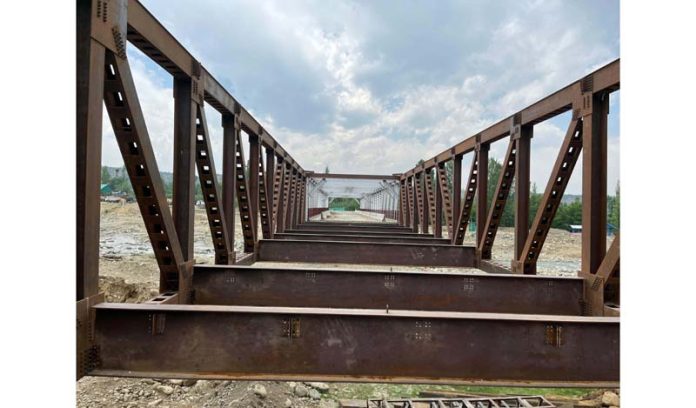The tale of the Rohmoo bridge in Pulwama district is one of promises delayed and hopes deferred. Washed away in the devastating floods of 2014, the bridge’s reconstruction commenced in May 2017, with an optimistic three-year completion timeline. Yet, here we stand in 2024, with the bridge still incomplete, straddling a chasm of bureaucratic inertia and operational delays. The Rohmoo Bridge is not just a structural entity but a lifeline for the local communities. It represents connectivity, economic stability, and convenience for the residents of Pulwama and Budgam districts. Its prolonged construction has caused significant disruption, forcing people to take longer routes, endure daily commuting hardships, and face economic setbacks, particularly in the transportation of horticulture produce-a vital source of income for many locals. The project, funded by the World Bank and initially estimated at over Rs 21 crore, has seen a series of delays and setbacks. As of now, approximately 80% of the work is purportedly completed, but the remaining 20% appears to be ensnared in red tape. The contractor’s withdrawal due to non-payment of bills underscores a concerning mismanagement of funds and project oversight. Further, the transition of the project’s execution from the JKPCC to the R&B Department has only added layers of complexity.
The locals’ frustration is palpable. Their calls for the expedition of the project are not just demands for convenience but cries for the restoration of normalcy and economic stability. While the necessity for proper approval systems is understood, the delays they cause should not become a perpetual excuse for inaction. The concerned authorities need to recognise the bridge’s critical importance. A project that began with a promise of quick restoration has turned into a protracted saga of inefficiency. The authorities must expedite the necessary approvals and ensure that the remaining work is completed within the promised two-month period post-approval. The completion of the Rohmoo Bridge will not only restore a crucial link but also rebuild the trust of the community in the governance and administrative processes.
Trending Now
E-Paper


